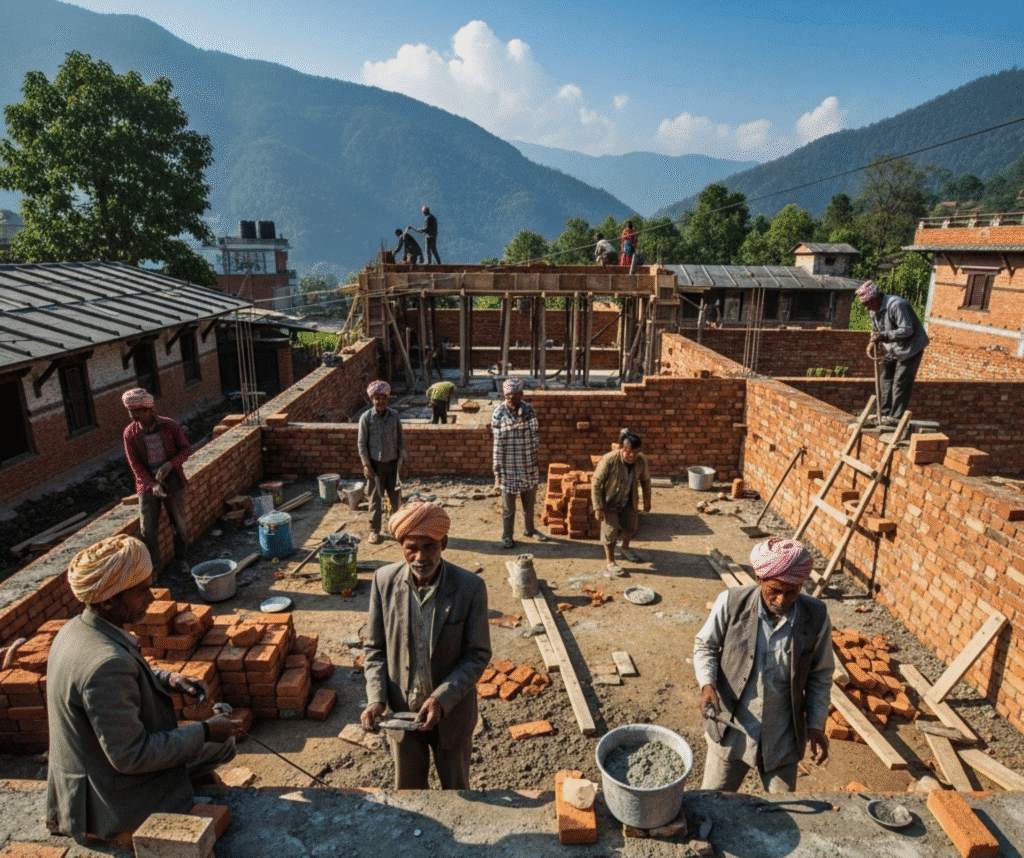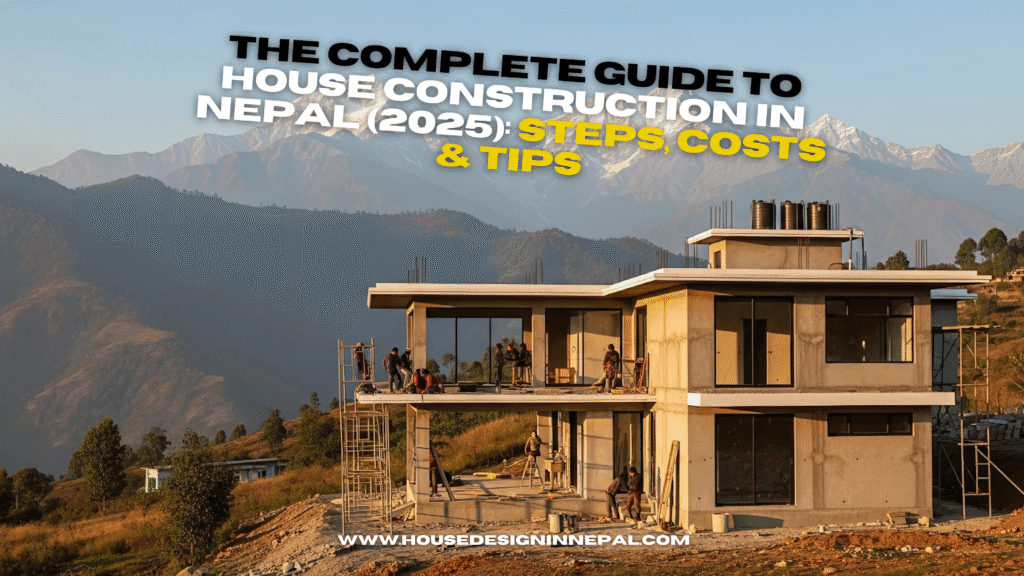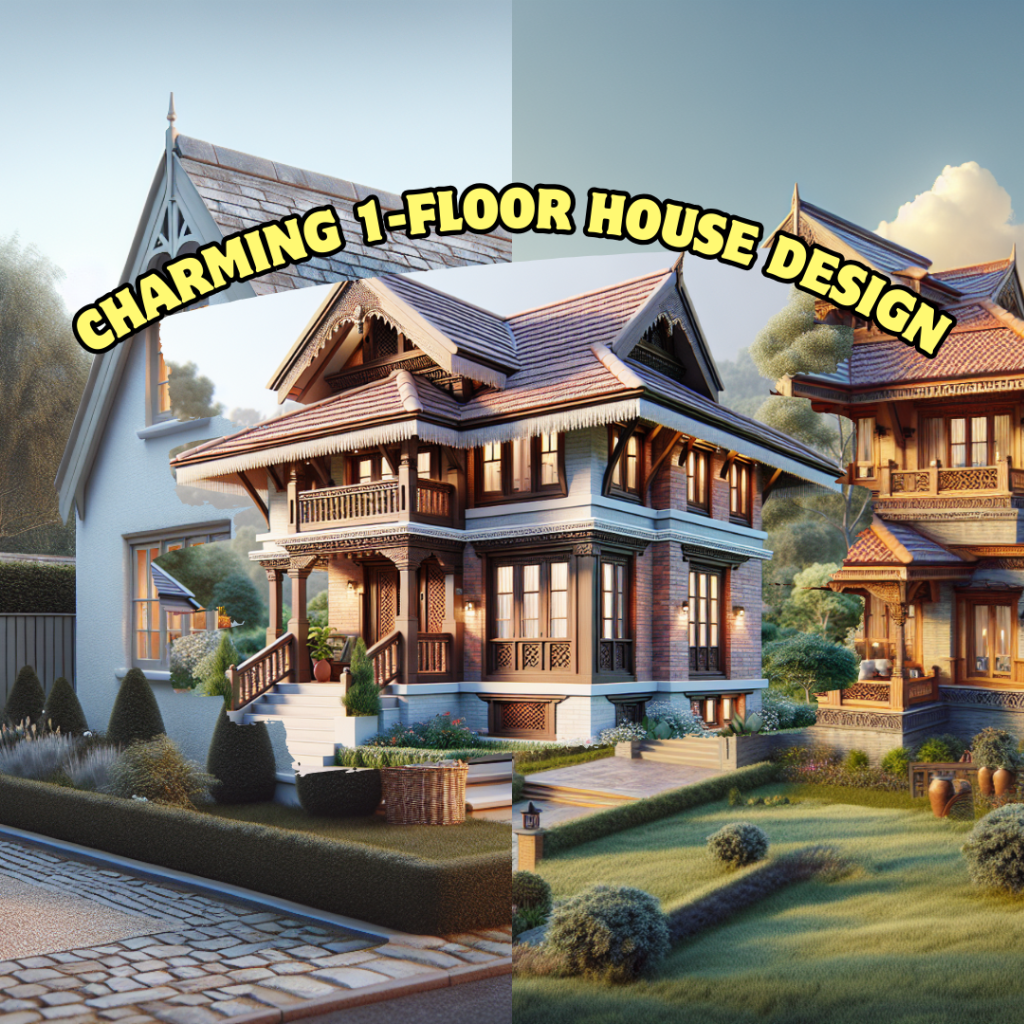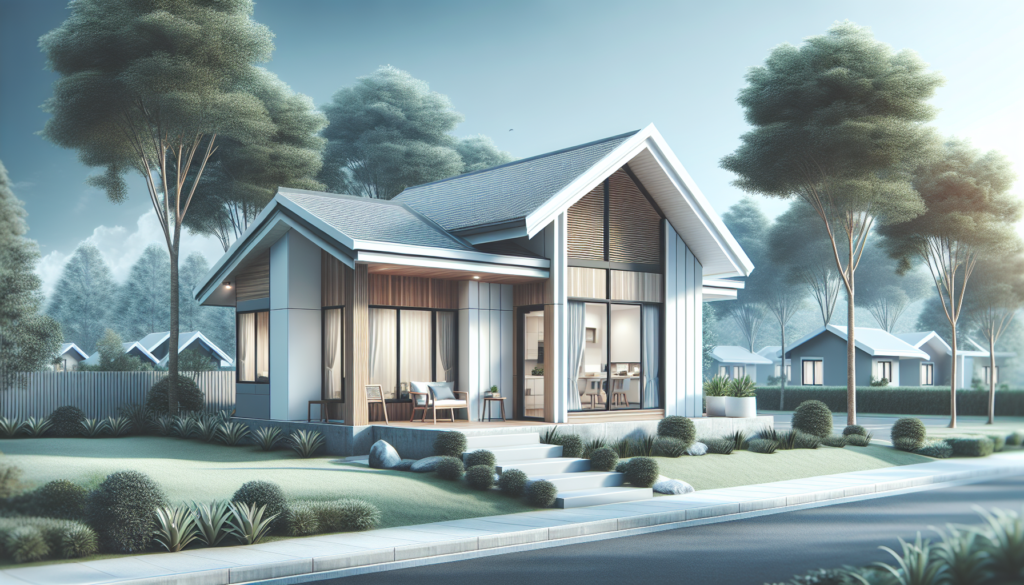The Complete Guide to House Construction in Nepal (2025): Steps, Costs & Tips
Building your own home in Nepal is more than a construction project; it’s the foundation for your family’s future and the realization of a lifelong dream. But turning that dream into a physical reality can feel complex, navigating everything from budgeting and legal approvals to managing the construction itself.
The journey is filled with critical decisions, and it’s easy to feel overwhelmed. Where do you start? How much will it cost? How do you ensure quality without overspending?
This guide is your complete roadmap. We will walk you through every phase of house construction, breaking down the process into clear, manageable steps. As a leading design and construction partner, House Design in Nepal has guided countless clients through this journey, and now we’re here to help you.
Phase 1: Planning & Budgeting Your House Construction
Before a single shovel hits the ground, the most important work begins: planning. This initial phase sets the entire foundation for your project’s success, ensuring your vision aligns with your budget and timeline.
Setting a Realistic Budget: Understanding House Construction Costs
The first question for most aspiring homeowners is, “How much will it cost?” The total house construction cost in Nepal is influenced by several key factors:
- Land Cost: The price of the land itself is often the single biggest expense.
- Location: Costs for labor and materials vary significantly between urban centers like Kathmandu and more rural areas.
- Materials: The quality and type of materials (bricks, cement, steel, finishing items) will heavily impact the budget.
- Design Complexity: A simple, rectangular house is far more cost-effective to build than a complex design with multiple levels, curves, and intricate features.
- Labor Costs: Skilled and unskilled labor wages are a major component of the budget.
While it’s difficult to give a single figure, a general estimate can range from NPR 2,500 to NPR 3,500+ per square foot for a standard residential building. To get a more precise estimate tailored to your specific requirements, it’s essential to use a detailed planning tool.
Pro Tip: To get a more precise estimate for your project, use our house construction cost calculator for Nepal. It helps you break down expenses and plan your budget effectively.
How to Finance Your Home: Exploring Your Options
With a budget estimate in hand, the next step is securing the funds. Most people use a combination of personal savings and bank loans. Nepali banks offer various home loan products, but it’s crucial to understand the terms, interest rates, and repayment schedules.
If you are considering a loan, our mortgage calculator can help you understand the potential monthly commitment and plan your finances accordingly.
Hiring the Right Team: Architect, Engineer, and Contractor
Your construction project is only as good as the team you hire. You will need:
- An Architect: To translate your vision into functional and aesthetic architectural drawings.
- A Structural Engineer: To ensure the building’s design is safe, stable, and compliant with Nepal’s building codes.
- A Contractor: To manage the day-to-day construction, labor, and material procurement.
When hiring, always check their credentials, past projects, and references. A good portfolio speaks volumes about their quality and style. You can see examples of our completed projects and design style on our Instagram.
Phase 2: The Pre-Construction Process (Legal & Technical Steps)

Once your team and finances are in place, you move to the critical pre-construction phase. This involves turning your designs into legally approved documents and preparing the site.
Land Selection and Soil Testing
If you haven’t already purchased land, choose a plot that is suitable for residential construction. Once you have the land, a soil test is non-negotiable. This analysis determines the soil’s strength and composition, which is vital for designing a safe and stable foundation.
Architectural Design and Structural Drawings
You’ll work closely with your architect to finalize the floor plans, elevations, and 3D visualizations of your home. The structural engineer then uses these architectural drawings to create detailed structural plans for beams, pillars, and foundations.
Navigating Legal Approvals and “Naksa Pass”
This is one of the most crucial legal steps. You must submit your architectural and structural drawings to your local municipality (Nagarpalika or Gaunpalika) for approval. This process, known as “Naksa Pass,” certifies that your design complies with all government regulations and building codes. Construction cannot legally begin without this permit.
Understanding Land Measurement in Nepal
Land in Nepal is traditionally measured in units like Aana, Ropani, and Dhur. It’s important to have a clear understanding of your plot size in these local units as well as in square feet or meters for design purposes. If you need to convert between different units of measurement, our unit conversion calculator is a handy tool.
Phase 3: The Step-by-Step House Construction Process in Nepal
With all approvals in hand, the exciting part begins! Here is a breakdown of the typical construction sequence.
- Step 1: Site Preparation and Excavation: The site is cleared, leveled, and excavated according to the foundation design.
- Step 2: Foundation Work (DPC Level): This is the base of your house. It involves laying reinforced concrete for footings and bringing the structure up to the Damp Proof Course (DPC) level to prevent moisture from rising into the walls.
- Step 3: Superstructure Work (Pillars, Beams, Slabs): This is where your house begins to take shape vertically. Pillars are erected, beams are cast, and the concrete slab for each floor is poured.
- Step 4: Masonry Work (Bricklaying): The walls are constructed using bricks and mortar, defining the rooms and the exterior of the house.
- Step 5: Plastering and Curing: Interior and exterior walls are plastered to create a smooth finish. Proper curing (wetting the plaster) is essential for strength.
- Step 6: Roofing and Waterproofing: The roof is constructed and waterproofed to protect the house from the elements.
- Step 7: Electrical and Plumbing Installation: Concealed wiring and pipes for electricity, water supply, and sanitation are installed in the walls and slabs.
- Step 8: Doors, Windows, and Railings: Frames for doors and windows are fitted, followed by the installation of the shutters, glass, and safety railings.
- Step 9: Interior and Exterior Finishing: This is the final stage where the house becomes a home. It includes flooring, tiling, painting, kitchen and bathroom fixture installation, and lighting. For specialized interior work, collaborating with a professional like Interior Designer NP can bring your vision to life.
Tips for Cheap House Construction in Nepal (Without Sacrificing Quality)
Building on a budget doesn’t mean you have to compromise on safety or quality. Here are some smart ways to achieve cheap house construction in Nepal:
- Smart Material Selection: Opt for locally sourced materials to save on transportation costs. Choose quality, cost-effective alternatives to expensive finishing items.
- Efficient Design: A simple, functional layout (like a square or rectangular shape) is cheaper to build and requires less complex structural work.
- Phased Construction: If your budget is tight, focus on completing the core structure and essential living areas first. You can always finish additional rooms or floors later.
- Proper Project Management: A well-managed project avoids costly delays, material wastage, and rework. Hiring a competent contractor is key.
Call to Action: Ready to Build Your Home?
Planning a house construction project can be overwhelming, but you don’t have to do it alone. Our team of expert architects, engineers, and project managers is here to guide you from the first sketch to the final handover. We ensure your project is completed on time, within budget, and to the highest quality standards.
Get a Free Consultation Today!
Follow our journey and see our latest projects on Facebook for inspiration.
Frequently Asked Questions (FAQs) about House Construction in Nepal
Q1: What is the average cost to build a house in Nepal?
The average cost for standard residential construction typically falls between NPR 2,500 and NPR 3,500 per square foot. However, this is just an estimate. The final cost depends heavily on location, material quality, design complexity, and the level of finishing you choose.
Q2: How long does house construction take in Nepal?
For a typical 2-3 story residential house, the entire process from design to completion can take anywhere from 12 to 18 months. This timeline can be affected by factors like weather (especially monsoon season), the efficiency of the construction crew, and the time taken for legal approvals.
Q3: What is the first step in building a house?
The absolute first step is financial planning. Before you even think about design or land, you need to establish a realistic budget. This will determine the scale and scope of your entire project.
Q4: What legal documents are needed for house construction in Nepal?
You will need several key documents, including your Land Ownership Certificate (Lal Purja), citizenship certificate, architectural and structural drawings (Naksa), and the building permit (Naksa Pass) from your local municipality.
Q5: Can I build a house cheaply in Nepal?
Yes, you can build a more affordable house by making smart choices. Focus on a simple and efficient design, use locally available materials, and ensure you have excellent project management to prevent waste and delays. “Cheap” should mean cost-effective, not low-quality.



